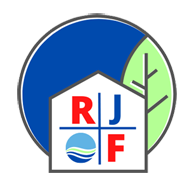Mold Inspections
Mold and mildew can be found almost anywhere. It can grow on virtually any organic substance, as long as moisture and oxygen are present. There are molds that can grow on wood, paper, carpet, foods, and insulation. When excessive moisture accumulates in buildings or on building materials, mold growth will often occur, particularly if the moisture problem remains undiscovered or unaddressed.
Our mold testing is done by certified indoor environmentalists. Mold, mildew and other fungi live and prosper in the same environment as we do. The houses we live in and the buildings we occupy, provide great conditions for mold growth.
All facilities need regular inspections for mold and mildew along with other periodic preventative air maintenance inspections. Before fungi (mold) can colonize, four requirements must be met:
- Air
- Livable Temperature
- Moisture
- Food
Humidity and water leaks are the cause of most Mold Infestations. Leaks, being the easiest to spot, are the first indications that mold may be present. But often mold grows behind walls, baseboards and other unidentifiable areas. Using your senses (visual and smell), can usually indicate the first signs of trouble.
In humid conditions, air conditioners can become a host to fungi and mold. If air conditioners are not operating properly and the indoor humidity rises, conditions become favorable for mold to grow.
RJF ENVIRONMENTAL CONSULTING SERVICES MOLD TESTING INCLUDES:
Infrared Cameras: Valuable diagnostic tool which gives us the ability to detect water leaks behind walls, in-ceiling, or under floors without the need for any destruction. In addition, it can identify dew points that indicate areas of potential mold or mildew growth.
Moisture Meter: Detects moisture measurement in walls, in-ceiling surfaces, flooring and around windows. If the moisture level is high, the possibility for mold or mildew increases.
Indoor Air Sampling: Indoor air samples will be taken to confirm the presence of mold, to identify the mold and the level of mold contamination. Indoor air samples are taken using an air vacuum as well as surface swab samples to identify species and get an accurate count of how many mold spores might be in the air. Mold spores are much smaller than pollen grains, allowing many of them to bypass the normal filtering function of the nose effectively. Inhalation of mold spores into the lung is a common cause of asthma attacks in people who are allergic to molds. In some patients with chronic sinusitis, an allergic reaction to mold overgrowth in the nasal sinuses can cause a condition termed allergic fungal sinusitis.
Dust Particulate Sampling: Laser particulate counter is used to measure airborne particulates in five different sizes from 0.3 microns to 5.0 microns. Excessive dust can be the result of poor air filtration and can cause allergic reactions in many individuals.
Click here to read about mold and how it can affect your health, and the importance of Indoor Air Quality Investigation And Testing, which is just one of the many services that our company offers.

